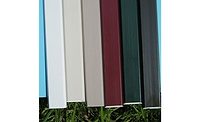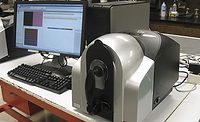Color Measurement Updated




Color measurement is serious business. Industry leaders pour millions of dollars into R&D, marketing and product shows to convince buyers of the accuracy and innovation of their hardware. Terms like Absolute Reflectance Value and CIE Tristimulus Values are often included in presentations and literature. This is aimed at providing the small (but knowledgeable) group of buyers with a degree of comfort and assurance that the product is a serious contender for their procurement dollars. This industry has thrived, and there are thousands of examples of the benefits of spectrophotometry. It’s a proven approach, but expensive and difficult to deploy throughout an organization. After all, can you imagine the cost of providing every employee with a color measurement device? Not a chance.
But what about the rest of us? After all, millions of sales people, clients, designers and technical support personnel could benefit from color measurement tools. They are on the front lines - creating, producing and supporting all sorts of products where color is a key factor. They need to know if the color is acceptable, and they really don’t have the time to wait weeks for a far-off lab to send samples. Time is money folks.
Here’s an example. A few weeks ago I received a call from a technician responsible for store paint and fixtures. His job is to make sure the paint on the walls, the tiles on the floor and the fixtures throughout the store are maintained. If the paint needs repair or a tile replaced, that’s his role. No time to create color standards or check for metamerism, because he travels to the stores in his region, fixes the problem and moves on. Welcome to the real world.
We provided him with an app and a colorimeter that immediately saved him time and his employer money. When the colorimeter is placed directly on the painted wall or damaged tile, the app immediately finds the product match. The technician told me the time he now saves is about 30 minutes per match. That’s time that used to be spent scraping samples, running to a local paint retailer and hoping the colors matched. The productivity pick up was immediate, and this new approach saves him hours every week.
New Technology
So how does this new technology work? Is it right for your company? And is it affordable? Let’s look at each.
Technology
A portable colorimeter (about the size of a cork) scans the surface color, and the results are displayed on a smartphone or tablet. With a dedicated light source, the colorimeter has a 4-mm aperture that captures the surface color data, and a cloud-based library of colors is searched for matching colors. Elapsed time is about 2 seconds per match. Security is managed though user authentication protocols so custom color libraries remain secure upon login. This technology is not designed to replace spectrophotometers, but rather augment them with portable/reliable surface color measurements.
Companies
B2B early adopters have included a wide cross section of FORTUNE 500s to small and mid-sized firms, including manufacturers, service companies, printers and a variety of professionals that need to match and inspect colors quickly. Global clients share color and product information (app to email), greatly reducing freight and other time-related costs.
Affordability
The technology costs about $1 per day, per user. Typical costs include (one-time) color library build and subscription fees. There are no maintenance agreements, on-site repair requirements or multiyear contracts. On-line training or facilitated sessions for larger groups are offered. Because it’s an app, not PC software, all updates, upgrades and bug fixes are free. In addition, app customization is available for enterprise users.
Applications
Let’s look at the applications and a review of how this technology fits in the color measurement ecosystem. As stated earlier, color measurement has applications in business and everyday life, so we’ve decided to focus here on the business applications.
Many organizations have preferred or proprietary colors, or both, so the app includes customized color libraries (in the cloud) as well as product images, so the search effectiveness is maximized. Sales people and customers simply scan the desired color sample and find a match from the library of colors they seek. For example, a client may ask if a certain color is available that matches their sample, so rather than trying to match it with a fan deck or send it off to a lab for matching, the customer (or sales person) scans the sample and is immediately provided with the best match. Weeks of back and forth are eliminated, so both parties save valuable time and money.
Another example involves a product manufacturer traveling to supplier sites. Because the app contains his company’s color standards, the suppliers’ samples can be checked on the spot. This provides the supplier with immediate feedback, helps to identify color differences and takes weeks out of the process because the results are communicated immediately.
Just weeks before this article went to press, a new feature was added to the app, designed for job sharing, scorecards and dashboard analytics. This empowers the supplier, field teams, customers and designers to share and collaborate with metrics that they choose.
The color measurement ecosystem can benefit from this mobile app-based solution, as a compliment to traditional methods. Colorimeters are not designed to replace spectrophotometers and the formulation software platforms available today, but they can certainly provide value and fast returns on a modest investment. Portability and speed, coupled with device accuracy, make this emerging technology worth looking into.
Looking for a reprint of this article?
From high-res PDFs to custom plaques, order your copy today!









